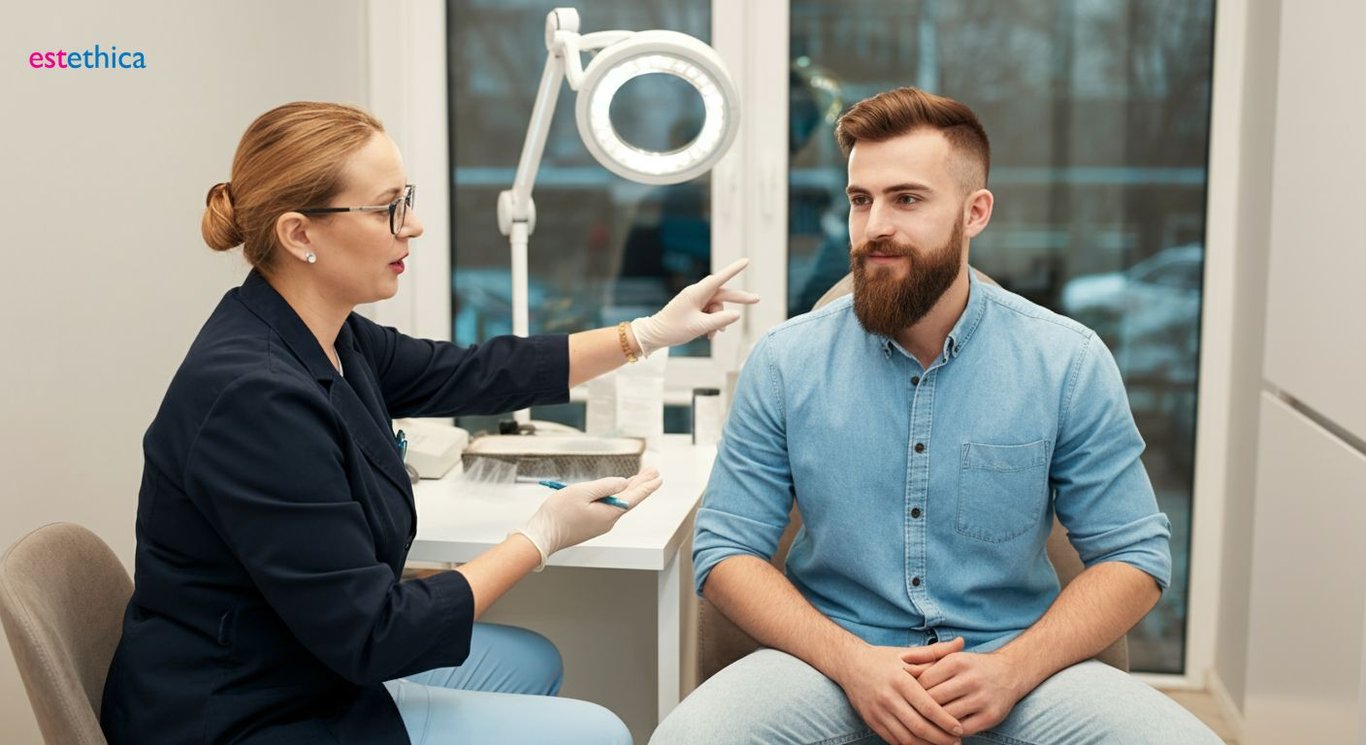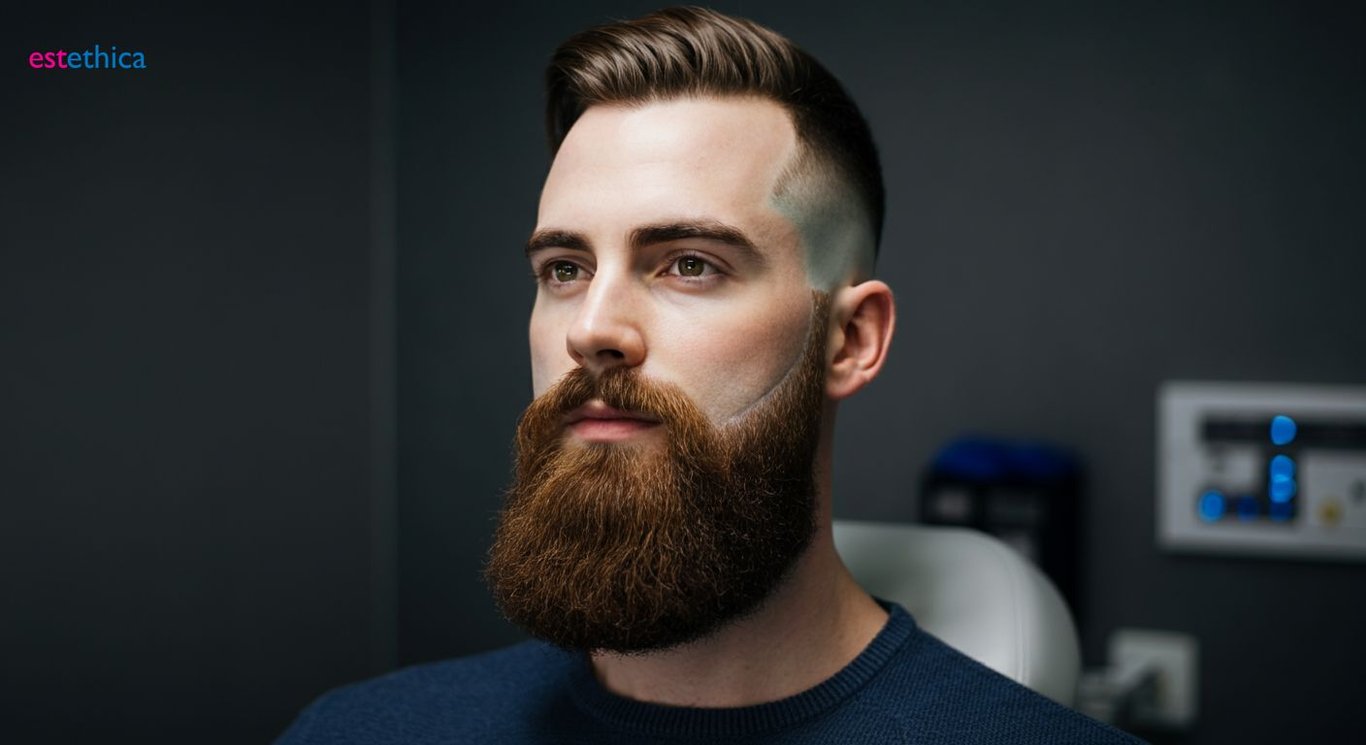Beard Transplant: Grow the Beard You've Always Dreamed Of
Learn how beard transplants can help you achieve a fuller, natural-looking beard. Discover modern techniques today.
In recent years, there has been a remarkable increase in individuals opting for beard transplants, as the cultural and aesthetic appeal of a well-groomed beard continues to rise. This procedure, once considered a luxury, has become far more accessible due to advancements in medical technology and techniques, promising natural-looking results. Whether you're looking to increase volume, cover patches, or shape your facial hair completely, a beard transplant can help you achieve the look you've always desired. This article will guide you through the nuances of beard transplantation, helping you understand the procedure and its benefits.
Facial Hair Transplant: Is it Right for You?
Determining Candidacy for Beard Restoration
A facial hair transplant isn't limited to those unable to grow a full beard; it's also for individuals seeking to increase facial hair density or cover patchy areas. The primary determinants for suitability include the quality of scalp hair for potential donor sites, overall skin health, and individual aesthetic aspirations. According to the American Academy of Dermatology, hair transplants have a success rate of 90-98% when performed on suitable candidates.
- Scalp Hair Quality: The density and thickness of scalp hair play a crucial role, as it serves as the primary donor source for the transplanted follicles. For example, individuals with thick, healthy scalp hair are generally excellent candidates.
- Skin Health: Optimal skin health in both the donor and recipient areas is essential for graft survival and minimizing complications. Conditions like active acne or eczema should be addressed before considering a procedure, ensuring a healthier environment for hair growth.
- Realistic Expectations: Candidates should have a clear and realistic understanding of what a beard transplant can achieve, including the density and coverage achievable. For instance, discussing before and after photos can provide a more grounded perspective on potential results.
Essential Prerequisites for a Successful Beard Transplant
Ideal candidates are generally in good health, non-smokers, and possess realistic expectations regarding the outcome of the procedure. Individuals with certain medical conditions or those who smoke may experience reduced graft survival rates. Achieving a full, dense beard requires careful consideration of these factors. For example, a consultation with a beard surgeon can clarify individual suitability.
- Health Status: Good overall health is necessary to ensure proper healing and minimize the risk of complications. Patients should be free from any underlying medical conditions that could impair recovery. For instance, uncontrolled diabetes can affect wound healing and graft survival.
- Non-Smoking: Smoking can significantly reduce blood flow to the scalp and facial areas, negatively impacting graft survival. Quitting smoking several weeks before and after the procedure can improve outcomes. A study showed that smokers have a 20% lower graft survival rate compared to non-smokers.
- Realistic Goals: Understanding the limitations and potential outcomes of a facial hair transplant is crucial. Patients should have realistic expectations about the density, coverage, and overall appearance of the transplanted beard. It is important to note that individual results may vary. Learn more about achieving your desired look at estethica.

Beard Restoration: A Guide to Natural-Looking Results
Achieving Natural Aesthetics in Beard Transplants
Achieving a natural-looking beard transplant involves meticulous planning and skilled execution, where the selection of the clinic and the expertise of the beard surgeon are of paramount importance. It is vital to choose a clinic that not only possesses a deep understanding of facial aesthetics but can also showcase a strong portfolio of successful past procedures. Clinics like estethica prioritize a natural outcome by carefully assessing the angle and direction of hair growth.
- Clinic Selection: Choosing a clinic with a proven track record in facial hair transplant is crucial. Look for clinics that specialize in facial procedures and have extensive experience in beard restoration.
- Surgeon's Expertise: The skill and experience of the beard surgeon play a pivotal role in achieving a natural look. An experienced surgeon understands the nuances of hair direction and placement.
- Portfolio Review: Requesting to see before and after photos of previous patients can help assess the clinic’s ability to deliver natural-looking results. This provides tangible evidence of their aesthetic skills.
Optimizing Post-Procedure Care for Uniform Growth
Post-procedure care is essential for ensuring the transplanted follicles settle well and grow uniformly. Proper aftercare typically involves keeping the transplanted area consistently moisturized and diligently avoiding any physical contact for several weeks. According to a study published in the Journal of Cosmetic Dermatology, proper post-operative care can increase graft survival rates by up to 25%. This is especially crucial for procedures like follicular unit extraction beard transplants, where individual follicles need optimal conditions to thrive.
- Moisturization: Keeping the transplanted area well-moisturized helps prevent scabbing and promotes faster healing. Use recommended hydrating solutions as directed by your surgeon.
- Avoiding Physical Contact: Refraining from touching or scratching the transplanted area is crucial to prevent dislodging the newly implanted grafts. This enhances the success rate of the procedure.
- Following Medical Advice: Adhering to all post-operative instructions provided by the clinic, including medication schedules and follow-up appointments, is paramount for achieving the best results.

Beard Transplant Before and After: What to Expect
Immediate Aftercare and Initial Healing Expectations
After a beard transplant, patients should be prepared for some immediate changes. The transplanted area, having undergone a meticulous beard hair transplant procedure, requires careful attention. Initially, inflammation and small scabs are common, indicating the body's natural healing response. These are typically short-lived, usually subsiding within the first week, provided the post-operative instructions are followed diligently. It's important to remember that patience is vital during this phase.
- Inflammation Management: Slight swelling in the transplanted area is normal and can be managed with cold compresses as advised by the beard surgeon.
- Scab Formation: Small scabs will form around the transplanted follicles, protecting them during the initial healing phase. Avoid picking at these scabs to prevent dislodging the grafts.
- Gentle Cleansing: Follow the clinic's instructions for gentle cleansing of the transplanted area to prevent infection and promote healing. Usually, a mild, non-irritating cleanser is recommended.
Long-Term Growth and Density Development
Over the following months, patients will witness gradual hair growth, indicative of the success of the facial hair transplant. This new growth should ideally blend seamlessly with existing facial hair, achieving a natural-looking density that enhances the overall aesthetic. However, it is essential to maintain realistic expectations. Full density may take several months to achieve, and individual growth rates can vary. According to the International Society of Hair Restoration Surgery, it can take up to 12 months to see the final results of a beard restoration procedure.
- Initial Growth Phase: Expect initial hair growth in the months following the procedure, gradually increasing in density over time. Be patient, as individual growth rates may vary.
- Trimming and Shaping: As the transplanted hair grows, regular trimming and shaping can help maintain the desired beard style and appearance, contributing to a well-groomed look.
- Follow-Up Consultations: Schedule follow-up appointments with the clinic to monitor the progress of the transplanted hair and address any concerns or questions. This ensures the best possible outcome.

Follicular Unit Extraction Beard: The Modern Approach
The Benefits of FUE for Facial Hair Implants
Follicular Unit Extraction (FUE) has revolutionized beard transplants, providing a minimally invasive solution with aesthetically pleasing results. In contrast to older methods that often left noticeable scarring, FUE involves extracting individual hair follicles from a donor site, typically the scalp's back, and then carefully implanting these into the desired areas of the face. This precise technique enables custom beard designs and density levels, tailored to each patient's wishes.
- Minimally Invasive: FUE eliminates the need for large incisions, reducing discomfort and recovery time. Patients often report feeling much better within just a few days post-procedure.
- Custom Design: With FUE, beard surgeons can create a beard that complements the patient’s facial structure and personal style, resulting in a natural and harmonious look.
- No Linear Scarring: Unlike older strip excision methods, FUE leaves no linear scars, making it an excellent choice for those who prefer shorter hairstyles.
Understanding the FUE Procedure for Beard Restoration
The FUE beard restoration procedure is known for its shorter recovery periods, allowing people to resume their regular activities fairly quickly post-operation. The specific steps involve a beard surgeon extracting individual follicles, which are then prepared carefully and implanted into the recipient areas on the face. This allows for exact control over hair placement, ensuring a seamless and natural-looking integration with existing facial hair. Studies show that about 85% of transplanted follicles successfully grow in the recipient area following an FUE procedure.
- Follicle Extraction: Individual hair follicles are carefully extracted from the donor area, usually the back of the scalp, using small punches to minimize trauma.
- Recipient Site Preparation: Tiny incisions are made in the recipient areas on the face, carefully considering the angle and direction of hair growth for a natural appearance.
- Follicle Implantation: The extracted follicles are then meticulously implanted into the prepared recipient sites, ensuring proper placement and density for optimal aesthetic results.
Precision FUE Method for Natural Beard Restoration at estethica
Meticulous Post-Procedure Protocols for Consistent Beard Growth at estethica
Frequently Asked Questions
Am I a good candidate for a facial hair transplant?
What can I expect during the beard transplant recovery time?
How does Follicular Unit Extraction (FUE) benefit beard restoration?
What is involved in post-procedure care for a beard transplant?
Discover Your Healthier, More Beautiful Self with Personalized Aesthetic Solutions.
📞 Call Now for a Free Consultation!